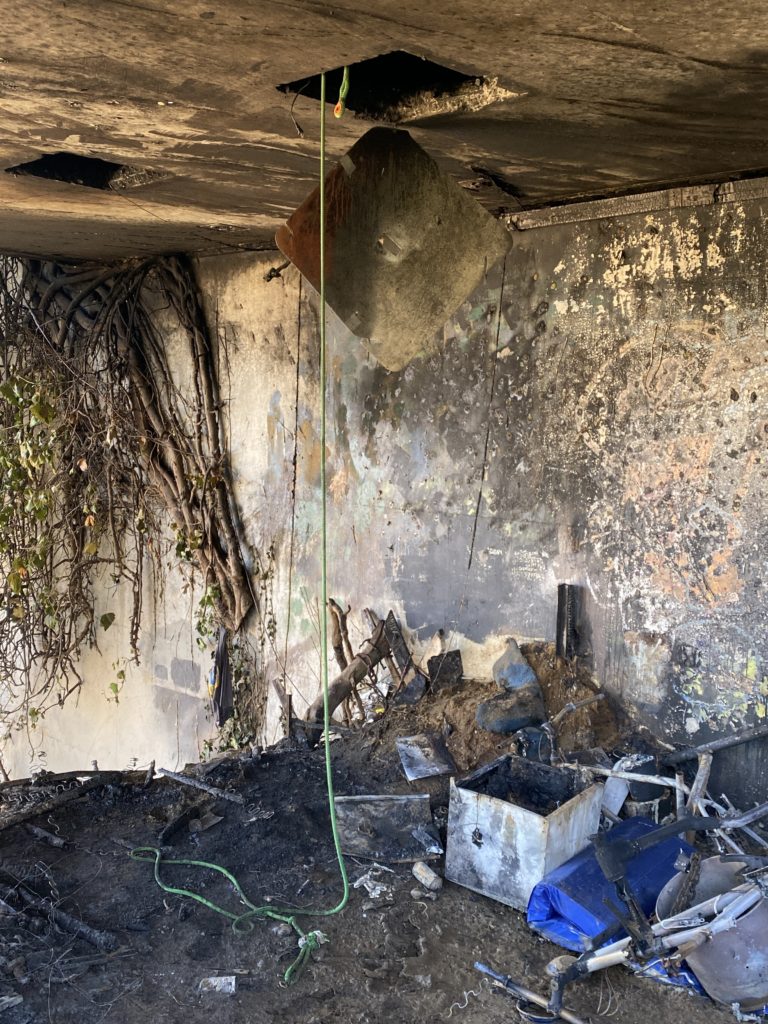
By now most Glen Parkers may have heard about the fire in a homeless encampment at the 280 South freeway overpass at Bosworth Street, at 1:17 a.m. on February 23. The fire took the life of one of the four persons who were sheltering there. The other three are being treated at a burn unit in the city.
The fire department initially received a report of a wildland fire at the freeway overpass. When they responded, they heard calls for help from an interior space. It thus turned into a heavy rescue situation as well. All told, around forty firefighters were involved in the incident, including Engine 26 from Digby Street. The cause of the fire is under investigation, although 12 hours after the event, the area was deserted. Debris was scattered around the site and a metal plate was hanging off from a hole in the concrete overpass.
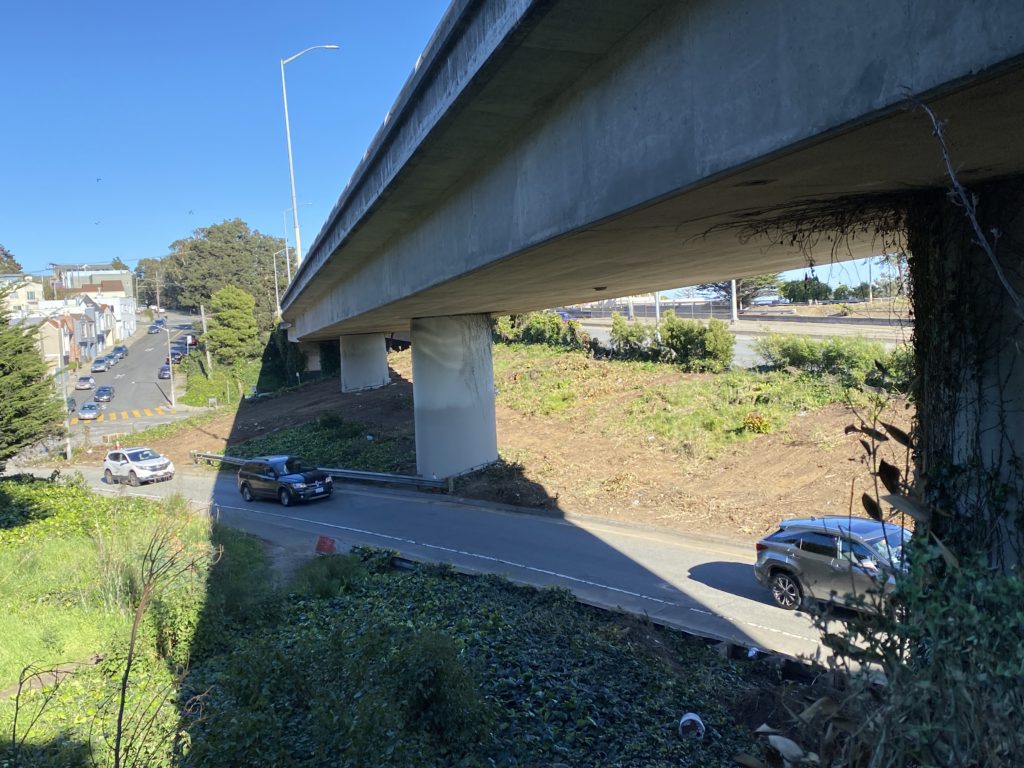
Hidden from sight and thus unbeknownst to those going about their business, the spot is whizzed by daily by hundreds as they enter the I-280 South on-ramp. There’s also a crosswalk spanning the freeway on-ramp which is frequented by pedestrians on their commutes and walks through downtown Glen Park.
If there can be something like a “typical” homeless encampment fire, the San Francisco Chronicle described it as one would expect—leading to the conclusion that unsheltered people, out in the cold, may have started a fire to keep warm which then got out of control. Though tragic and indeed deadly, it’s not an especially unusual scenario.
Here are reports from a YouTube video put out by the SFFD public information office and the Chronicle:
The Glen Park News went to the scene Wednesday afternoon to investigate and met up with a man who is a friend of one of the burn victims. Fortunately, according to the man who declined to give his name, his friend seems like he’s going to be OK for now at least.
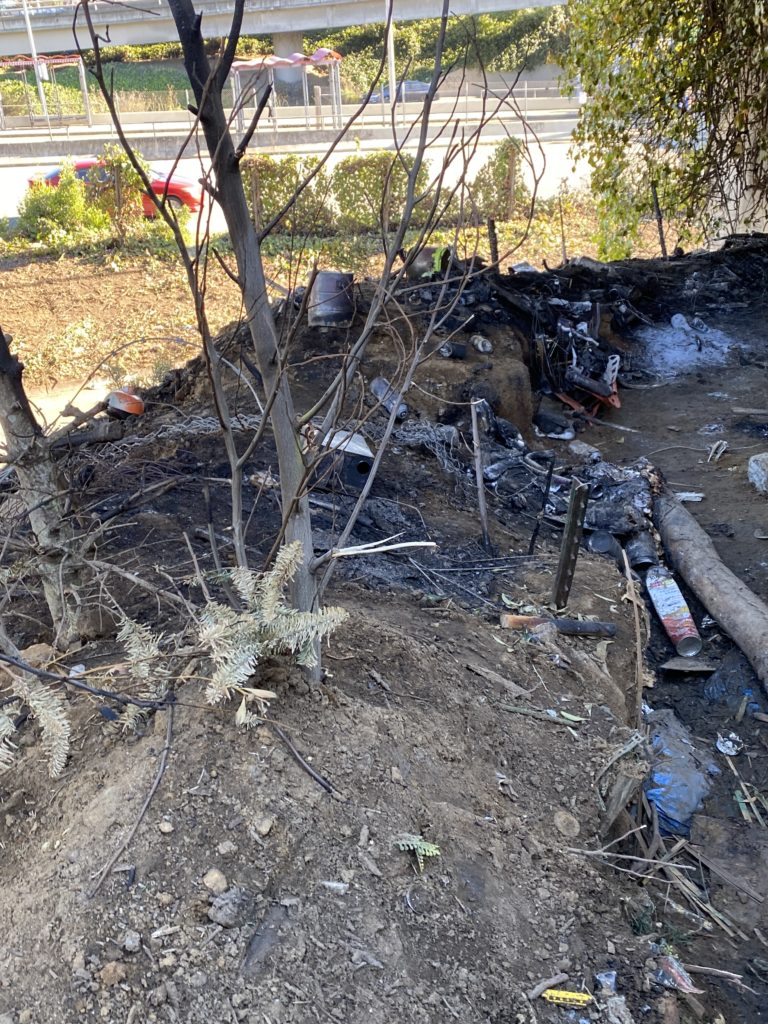
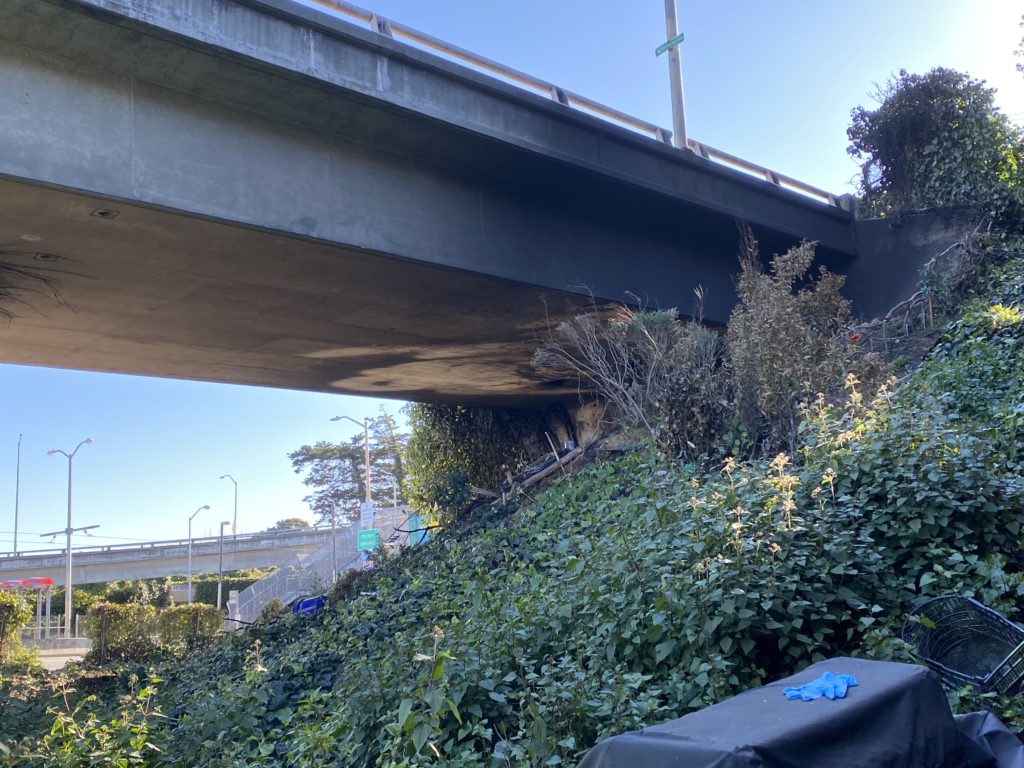
The circumstances of the encampment and the fire don’t fit neatly into the narrative that we San Franciscans have grown accustomed to. As told to the Glen Park News, the situation was unusually dangerous.
According to the gentleman who spoke to the Glen Park News at the site of the fire, people had been living there for an entire year. Residents of nearby Arlington Street were also aware of tents underneath the overpass. The four people, though they might have used tents, also sheltered within the freeway bridge itself, in a gap (a “soffit”) inside the underside of the overpass which is an access point for inspection by CalTrans, the agency responsible for all maintenance and the freeway system itself.
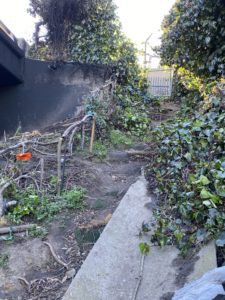
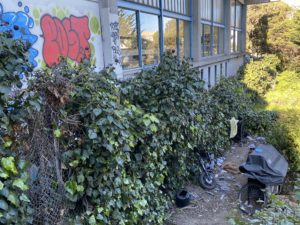
One of the group had some skills as a construction worker and gained access to this space which they routinely entered from the ground by a ladder.
In the first photo in this story it’s possible to see one of two metal plates that covered access to this inspection space hanging open.
The residents appear to have run an underpowered extension cord to illegally tap into an electricity supply from the adjacent BART station. There are also indications they created a sort of drainage system to mitigate the inevitable dampness in the space. In fact, it was possible there were mattresses for sleeping there as well.
The interior underpass space was highly dangerous because there was no separate exit. When the fire broke out, it appears that four people were trapped inside, killing one.
The California Highway Patrol is leading the investigation into fire together with the San Francisco Fire Department. The Glen Park News reached out to the CHP for comment and connected with Mark Andrews, the San Francisco CHP area public information officer.
Right now, pending results of the investigation, he’s of the opinion the people either started a fire in the soffit or brought something into that crawl space that started the fire. Surprisingly, at least to the Glen Park News, Andrews says the same situation has occurred in San Francisco many times.
“We’ve been dealing with that issue for quite a few years and typically we’ll tell CalTrans to remove everyone from these areas. They’ll clean the area, shut it and secure it by locking it or welding some metal in place. But people, when all they have is time, will find a way to break through and use the same location again.”
At the I-280 site, Andrews said he wasn’t aware if there was a plan to secure the soffit immediately or if it’s open pending investigation of the fire.
Regarding the length of time the encampment was allowed to persist, Andrews cited the COVID situation over the last couple of years. “We haven’t been proactive in removing the unsheltered as we had been before, due to the different protocols in place.”
In Glen Park and all of San Francisco, we have become inured to the narrative of homelessness: often drug addiction or mental health issues, or both at once; lack of available services including shelter; and the last resort, pitching a tent out in the open.
For those desperate individuals, this case ironically illustrates particular ingenuity and creativity but also the danger of such makeshift living arrangements.